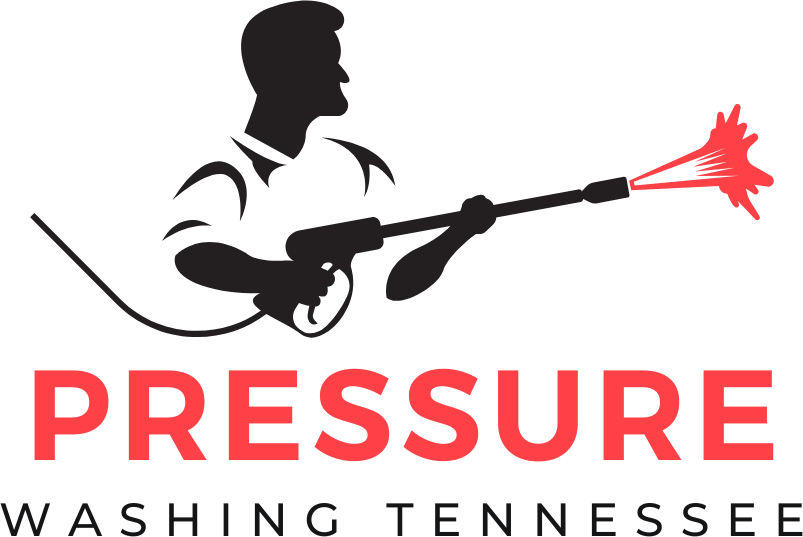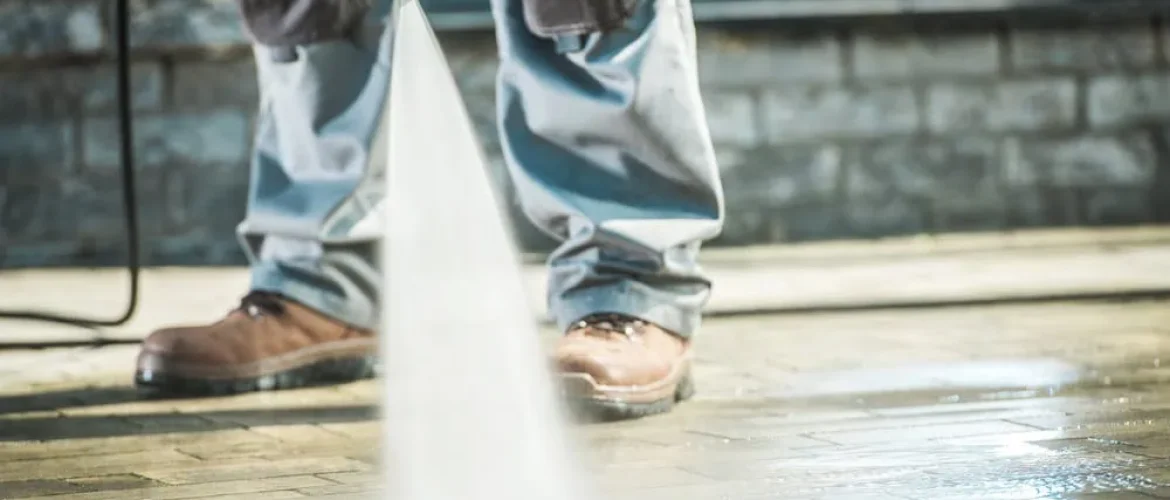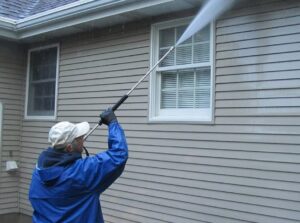First impressions matter and nothing says “welcome” like a spotless storefront and a pristine parking lot. I know how quickly dirt grime and oil stains can drag down the curb appeal of any business. That’s why pressure washing isn’t just about cleaning—it’s about showing customers you care about every detail.
With the right approach pressure washing transforms tired exteriors and neglected lots into inviting spaces that attract more foot traffic. I’ve seen businesses boost their reputation and even increase sales just by investing in regular exterior cleaning. If you want your property to stand out and make a lasting impact you’re in the right place.
Importance Of Pressure Washing For Storefronts And Parking Lots
Pressure washing storefronts and parking lots quickly removes dirt, grime, chewing gum, and oil stains. I see business properties keep a brighter, more welcoming appearance when surfaces stay clean. Freshly washed entryways and parking areas show customers that a business takes pride in maintaining high standards.
When I schedule regular cleanings, stains and debris don’t build up, which keeps concrete and exterior surfaces in better condition over time. Mold, mildew, and algae can make walkways slippery and unsafe, but pressure washing clears these hazards and lowers the risk of accidents.
I notice that properties that stay clean and tidy get positive feedback from visitors. Clean storefronts and lots tend to draw more foot traffic, which can influence sales and footfall, as reported by business improvement associations. Maintaining a clean exterior also helps meet local health or city code requirements, reducing the chances of fines.
For me, pressure washing stands out as an efficient, cost-effective way to extend property life and enhance the overall customer experience.
Preparing For Pressure Washing
A bit of preparation helps make pressure washing storefronts and parking lots both effective and safe. I focus first on safety and matching my cleaning approach to each unique surface.
Safety Precautions And Equipment
Proper safety gear gives me confidence on the job. I wear non-slip shoes, gloves, and protective eyewear for every project. Reliable pressure washers with adjustable PSI settings work best, as they handle concrete, brick, and metal without causing unnecessary wear. Electrical cords stay clear of water sources, and I check hose connections before starting. I also use cones or barriers to keep visitors away during cleaning.
Assessing The Surface And Stains
Surface type and stain severity guide my cleaning choices. I check storefront facades, sidewalks, curbs, and parking lot surfaces for cracks, loose paint, or failing grout. For tough stains like oil spots or chewing gum, I select targeted cleaners and allow them to soak in before washing. Gentle settings and wide spray tips protect fragile materials, while harder stains often call for a narrower spray pattern. Not all areas need the same pressure, so I adapt my approach to each section for even, thorough results.
Best Pressure Washing Techniques
Using effective pressure washing techniques on storefronts and parking lots keeps business exteriors looking fresh and inviting. I rely on the right equipment and a methodical approach to deliver noticeable results without risking surface damage.
Choosing The Right Pressure And Nozzle
Selecting the right pressure setting and nozzle ensures thorough cleaning and surface protection. I pick a lower PSI and a wide-angle nozzle for glass and painted storefronts—usually 1,200 to 2,000 PSI with a 25-degree or 40-degree nozzle. For concrete parking lots, I use higher pressure, around 3,000 PSI, and a narrower nozzle such as 15 degrees. This combination removes stubborn grime and oil stains quickly while avoiding scratches. Adjusting both pressure and nozzle lets me handle different surfaces with precision.
Step-By-Step Process For Storefronts
Cleaning storefronts starts with a gentle rinse to loosen surface dirt. I spray from top to bottom, which helps prevent streaks and runoff spots. I focus extra attention on entryways and display windows since they’re high-traffic areas. After the initial rinse, I apply a mild detergent using a low-pressure setting, let it sit for several minutes, then thoroughly rinse again. For spots with gum or sticky debris, I use a targeted, slightly stronger spray. Edges and corners get careful attention to ensure a polished appearance.
Step-By-Step Process For Parking Lots
Pressure washing parking lots begins with a sweep to remove loose debris. I work in sections, applying a degreaser to any oil spots or heavily soiled patches first. After letting the cleaner work in, I switch to a high-pressure setting on the concrete and move the wand in overlapping lines, ensuring even coverage. Special attention goes to curbs, parking bumpers, and drains, where dirt tends to build up. Once complete, I check for residue or missed areas and rinse again if needed, letting the surface dry fully before allowing use.
Common Mistakes To Avoid
Overlooking surface preparation often leads to poor results. I always sweep away loose debris before starting, so dirt doesn’t get pushed deeper or spread around the lot or entry. Skipping this step leaves streaks and forces me to go over spots again.
Applying too much pressure damages storefront windows, painted trim, and signage. I use lower pressure settings for glass and painted areas, keeping higher PSI for concrete zones only. With the right balance, I get surfaces clean without causing chips or cracks.
Missing pre-treatment steps makes stain removal much harder. When I skip using the proper detergent for grease or gum, stains linger after washing. Applying a suitable cleaner gives me the best shot at a spotless finish.
Neglecting protective gear exposes me to injury. Gloves and non-slip shoes protect my hands and reduce accident risks on wet ground. Goggles keep debris out of my eyes, especially when removing stuck-on grime.
Using the wrong nozzle type or angle creates uneven cleaning and missed spots. I stick to wide nozzles and steady movements on storefront siding and glass, switching to a narrower tip for stubborn stains in high-traffic parking zones.
Ignoring manufacturer guidelines shortens equipment life and risks property damage. I check my washer’s manual before each job and follow cleaning agent instructions to avoid unwanted wear or surface etching.
Letting runoff flow unchecked can pollute nearby landscaping or drains. Blockers and controlled rinsing help me protect the environment around the property while keeping wash water—and chemicals—out of storm drains.
Maintenance Tips After Pressure Washing
Staying on top of surface care after pressure washing keeps the storefront and parking lot looking their best. Picking up debris every day, like litter or fallen leaves, helps prevent buildup. Spot cleaning stains as soon as they appear makes a difference, especially with things like oil drips or chewing gum.
Checking for new stains regularly lets me tackle them before they set in. Using gentle cleaners and soft brushes on small spots, I avoid harsh scrubbing that might dull finishes on storefront glass or painted trim. Repainting faded lines or curb edges in the parking lot can really sharpen up the space.
Keeping gutters and drains clear protects surfaces by channeling water away, which helps prevent puddles and algae growth. Watching for signs of mold or mildew after rain means I can address issues fast, maintaining a bright and welcoming appearance.
Scheduling pressure washing sessions a few times a year, around seasonal changes or special events, supports ongoing curb appeal. Keeping up with these maintenance habits extends the clean look and shows customers I care about the details.
Conclusion
I’ve seen firsthand how a well-maintained storefront and parking lot can set a business apart. Pressure washing isn’t just about cleanliness—it’s a smart way to show pride in your property and attract more customers. With the right approach and regular upkeep, you can keep your business looking sharp all year round.
If you want your storefront to make a lasting impression, don’t overlook the power of consistent exterior cleaning. Your customers—and your bottom line—will thank you for it.


